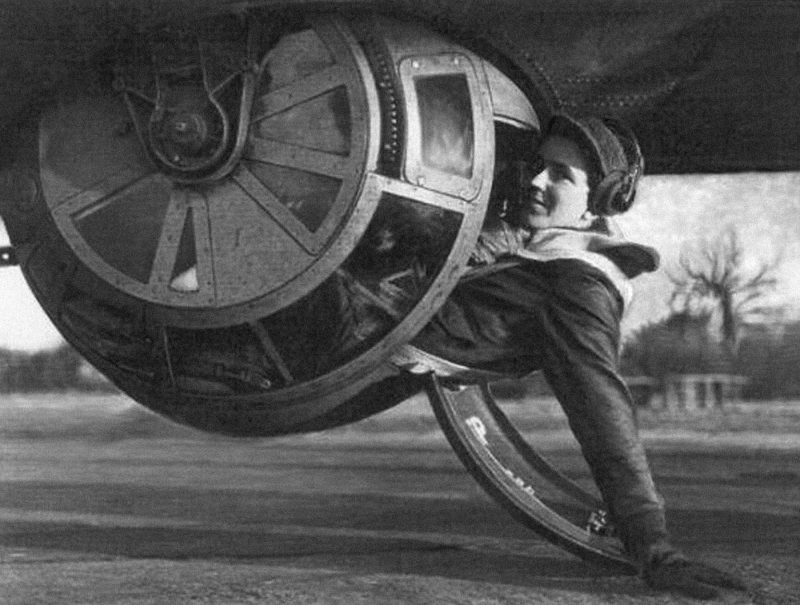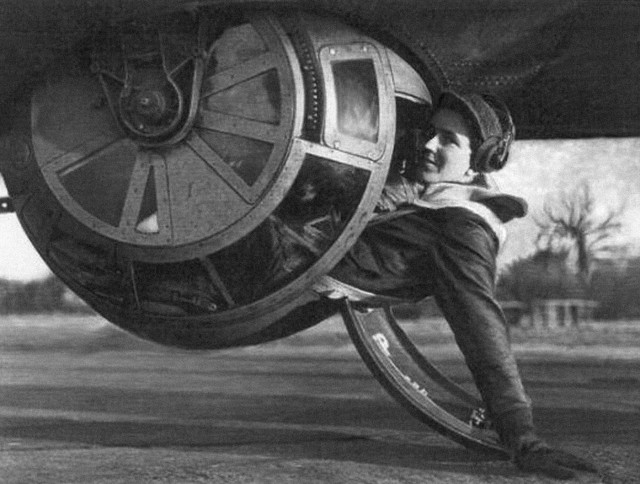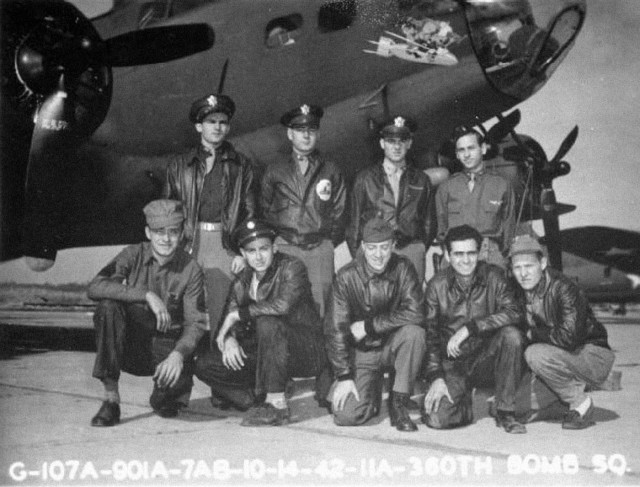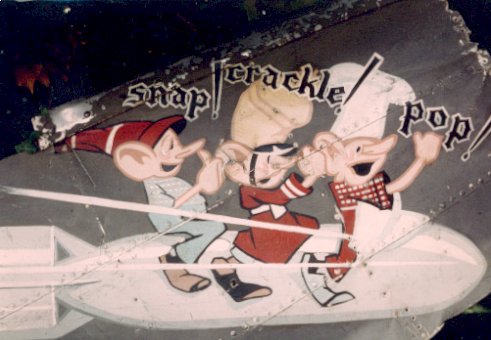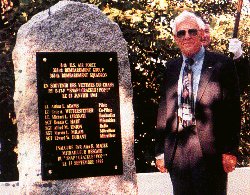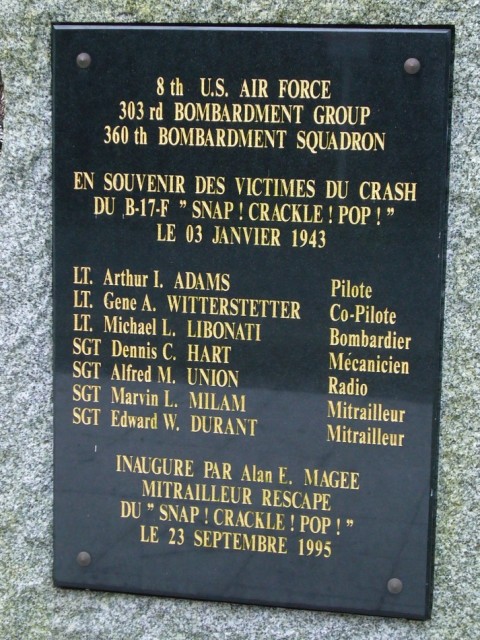Ranked among the luckiest people in the world, Alan E. Magee survived a free fall of almost four miles from a B-17 bomber during a bombing raid in WWII.
When his bomber came under fire from German anti-aircraft guns, he ran out of options. His bomber was spinning mid-air and spiralling towards the ground. Magee had to jump out of it to escape certain death. But he was not aware that he had jumped in a 4-mile drop without his parachute.
Magee’s survival story has featured in many magazines and is considered one of the most miraculous survivals of WWII. After the war, Magee did not discuss his ordeal or his survival story with anyone.
Three months before being shot down, the original crew assigned to the B-17F Snap! Crackle! Pop! #41-24620 (PU-O), under Jacob W. Fredericks, from October 14, 1942. Source: 303rd BG [Via]Ball Turret Gunner
Alan Magee decided to join the US Army after Japanese attacked the American fleet at Pearl Harbor. He felt a need to enlist in the Army and defend his country.
He was considered a perfect fit for the B-17’s ball turret. The space inside the turret was very small and cramped. Magee was 5-foot-7 and could barely fit into the small space inside the turret. On the day Magee went on the mission of his lifetime, he left his parachute on the bomber’s deck because there was not much space inside the turret.
Magee’s friend, Don Jenkins, also a veteran of WWII, said that being a B-17 gunner was not an easy job during WWII. It was common knowledge among soldiers that the B-17 ball turret gunners had a very high casualty rate. This was mainly because German fighters would target the gunners first. Remembering his friend and comrade, he said that Magee was a great friend and a kind human being. He also said that during almost 40 years of their friendship, Magee only spoke about the incident three times.
On 3rd January 1943, Magee got into a Flying Fortress bomber on his seventh bombing mission. He was 24, and was one of the ten-man crew of the B-17 bomber. They took off from Molesworth, England, and their target was a German submarine port in France. In total, there were 85 B-17s involved in the raid, along with some fighter planes escorting them.
Actual Nose Art panel from crashed B-17 at St. Nazaire, France – 03 January 1943 [Via]When Magee’s bomber reached the French town of St Nazaire, it came under heavy fire from German anti-aircraft guns. The bomber took a couple of nasty blows on its wing and engine; it started spiralling towards the ground, and was spinning at a very high speed. Magee had no idea how to control the plane and saw a small opening, which he quickly jumped through.
Magee plunged almost 22,000 feet, falling unconscious before crashing into the roof of the St Nazaire railway station. When he regained consciousness, as the Germans were taking him to hospital, he exclaimed, ‘Thank God I am alive.” Magee once told his friend that the Germans had great respect for those who survived miraculously.
On the 23rd of September 1995 Alan E. Magee, accompanied by his wife Helen, returned to St Nazaire to take part in a ceremony sponsored by French citizens, dedicating a memorial to his seven fellow crewmen killed in the crash of Snap! Crackle! Pop! in the forest at La Baule Escoublac on Jan. 3, 1943. [Via] Closeup of the memorial panelThe mission Magee was a part of turned out to be a failure for the Allied forces. The US Army lost 75 airmen, along with 7 planes, while 47 planes were badly damaged.
Magee stayed in various German camps as a Prisoner of War. He was released in May 1945. Alan Magee received the Air Medal for meritorious service and the Purple Heart for his achievements in the war.
Magee lived another 61 years after his fall during WWII and died of kidney failure and complications from a stroke. He is buried in San Angelo, Texas.
